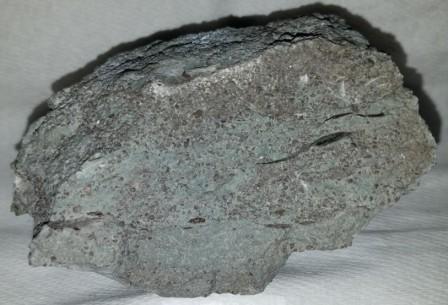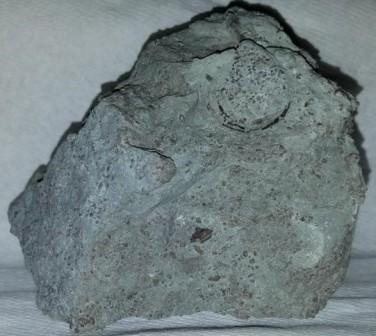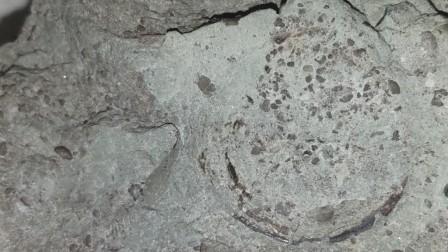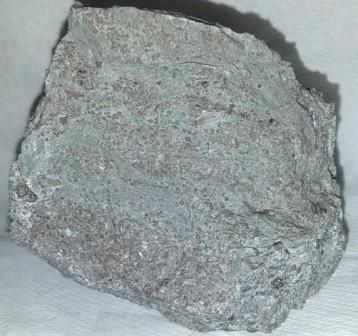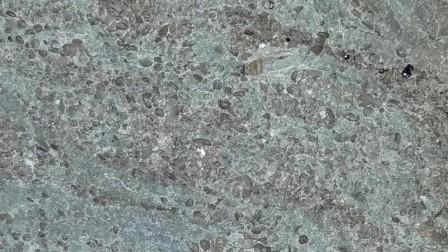Phosphorite
Photographed by Michael P. Klimetz
[Massive Oolitic and Biogenic]
Vernal Mine
Vernal
Uintah County
UTAH
Photographed by Michael P. Klimetz
[Massive Oolitic]
Conda
Caribou County
IDAHO
Photographed by Michael P. Klimetz
[Massive Oolitic and Biogenic]
Vernal Mine
Vernal
Uintah County
UTAH
Photographed by Michael P. Klimetz
[Massive Oolitic and Biogenic]
Vernal Mine
Vernal
Uintah County
UTAH
Photographed by Michael P. Klimetz
[Massive Oolitic and Biogenic]
Vernal Mine
Vernal
Uintah County
UTAH
Photographed by Michael P. Klimetz
[Massive Oolitic and Biogenic]
Vernal Mine
Vernal
Uintah County
UTAH
Phosphorite (aka phosphate rock or rock phosphate) is a non-detrital sedimentary rock that contains high amounts of phosphate minerals. The phosphate content of phosphorite (or grade of phosphate rock) varies greatly, from 4% to 20% phosphorus pentoxide (P2O5). Marketed phosphate rock is enriched (aka beneficiated) to at least 28%, often more than 30% P2O5. This occurs through washing, screening, de-liming, magnetic separation or flotation. By comparison, the average phosphorus content of sedimentary rocks is less than 0.2%.[2] The phosphate is present as fluorapatite Ca5(PO4)3F typically in cryptocrystalline masses (grain sizes < 1 μm) referred to as collophane-sedimentary apatite deposits of uncertain origin. It is also present as hydroxyapatite Ca5(PO4)3OH or Ca10(PO4)6(OH)2, which is often dissolved from vertebrate bones and teeth, whereas fluorapatite can originate from hydrothermal veins. Other sources also include chemically dissolved phosphate minerals from igneous and metamorphic rocks. Phosphorite deposits often occur in extensive layers, which cumulatively cover tens of thousands of square kilometers of the Earth's surface. Limestones and mudstones are common phosphate-bearing rocks. Phosphate-rich sedimentary rocks can occur in dark brown to black beds, ranging from centimeter-sized laminae to beds that are several meters thick. Although these thick beds can exist, they are rarely only composed of phosphatic sedimentary rocks. Phosphatic sedimentary rocks are commonly accompanied by or interbedded with shales, cherts, limestone, dolomites and sometimes sandstone. These layers contain the same textures and structures as fine-grained limestones and may represent diagenetic replacements of carbonate minerals by phosphates. They also can be composed of peloids, ooids, fossils, and clasts comprised of apatite. There are some very fine-grained phosphorites which possess no distinctive granular textures. This means that their textures are similar to that of collophane, or fine micrite-like texture. Phosphatic grains may be accompanied by organic matter, clay minerals, silt-sized detrital grains, and pyrite. Peloidal or pelletal phosphorites occur normally, whereas oolitic phosphorites are not common. Phosphorites are known from Proterozoic banded iron formations but are more common in Paleozoic and Cenozoic sediments. The Permian Phosphoria Formation of the western United States represents some 15 million years of sedimentation. It reaches a thickness of 420 meters and covers an area of 350,000 square kilometers. Commercially mined phosphorites occur in France, Belgium, Spain, Morocco, Tunisia and Algeria. Phosphorites in Florida, Tennessee, Wyoming, Utah, Idaho, and Kansas have long been commercially exploited.
